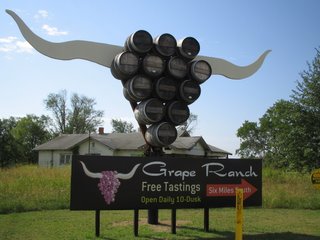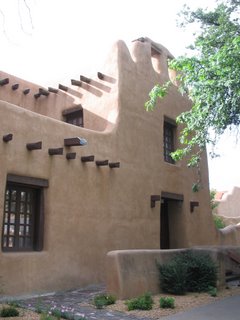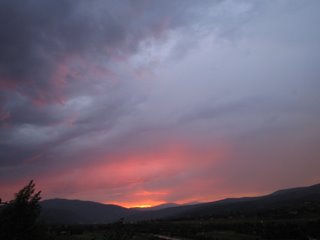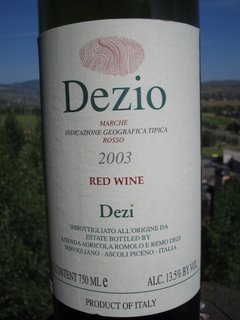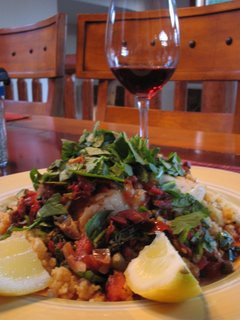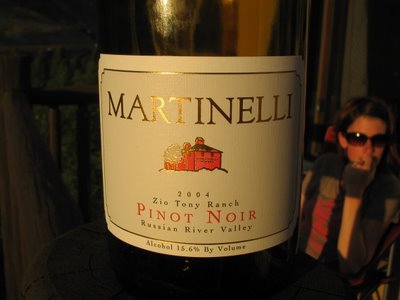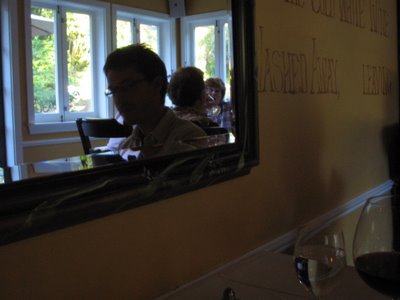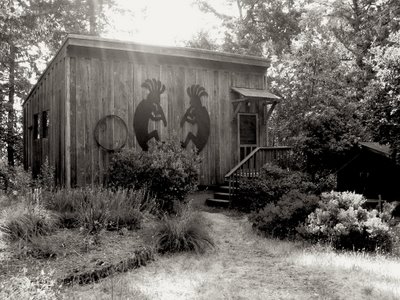
On a trip to the Russian River Valley last summer Keely and I were fortunate enough to make our way to Arrowood winery and taste through a number of excellent wines. Our favorite were the Syrahs and we came home with as many as we could afford, which wasn't much since we ended up buying about 3 cases of RRV wine in just a few days. I saved this bottle for a night when we really wanted to drink an excellent full-bodied, decadent wine. A dinner to celebrate ending the semester seemed good enough to open this wonderful Syrah.
Syrah from California has begun to attract wine fans that appreciate the heady aromatics, voluptuous flavors and its ability to age. Having kept this at home for over a year, moving the wine multiple times from room to room and even to a new home, the year of uneven aging only deepened the characteristics we first appreciated in the tasting room. It's nice to do this, age your wine a bit, since only the 2002 is available now and we are still able to taste an older slightly aged wine instead. It also means you get to look forward to tasting it again over an entire year.
Arrowood has a friendship with Saralee and Richard Kunde, owners of Saralee's Vineyard in the Russian River Valley. Richard and Alis Arrowood have purchased fruit from the Kundes for over ten years and the 2001 Saralee's Vineyard Syrah is one of the excellent products of this collaboration. The grapes for the 2001 Syrah were hand harvested and sorted in the vineyard. After crushing, Arrowood's winemaker notes show that they fermented the fruit in small stainless steel tanks. In a Rôhne tradition, the Syrah was co-fermented with a small amount of Viognier (4%) to intensify its color and enhance the exotic, complex aromas of the wine. It was then barrel aged for 16 months in French oak, and, in keeping with the non-interventionist philosophy of Arrowood, it was neither fined nor filtered. Which means all the sediment is in there giving a full fleshy wine that needs decanting before pouring. The unfiltered process makes this wine great and full but you certainly don't want to drink the sediment. Robert Parker called this wine "a full-bodied, layered, hedonistic as well as intellectual turn-on." I thought so too.
Price: $40-50 (depending on where you find it)
Color: Intense deep purple
Nose: Deep plum and cherry, complex and vibrant, even heady
Taste: Dense ripe fruit of blackened plum, black cherry, chocolate overtones, fleshy but supple tannins, and a note of licorice worked together to produce an intense looking wine, full, silky with a smooth finish. This is fruit-forward Syrah, thick, juicy, balanced and complex. It is distinctive and on the dramatic side. It had excellent structure and depth, and you can imagine the vineyard it comes from given the winemaker's focus on expressing its true varietal character and the terroir of Saralee's Vineyard. Really a brilliant wine. I wish I had more.













